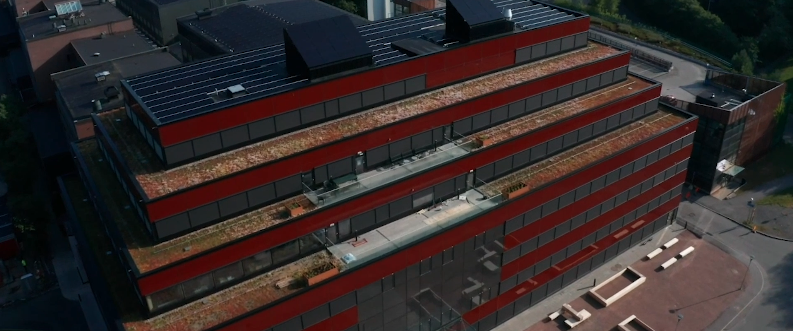
With an increasing demand for electricity, flexibility services become an important part of the green transition towards fossil-free energy. Currently, at Chalmers University of Technology Johanneberg Campus, new technologies are being developed and tested to meet the forthcoming capacity shortage. This is operated by Akademiska Hus in collaboration with Chalmers, within the FlexiGrid project.
The aim of the project is to synchronize the consumption and production of energy; accordingly, the responsibility can not only be on the energy producer, but also on the consumer. Particularly, by pausing the energy consumption during a certain period of time it can save power load and energy, thereby reducing the load on the grid. In addition, it also provides economic benefits for the consumer by reducing energy consumption during peak-hour.
Through a platform developed by Chalmers, the energy systems will automatically turn on and off different energy-consuming assets on campus. During certain hours when the demand for electricity is high different strategies can be used in order to reduce the load on the grid. This can for example be done by delivering energy from battery storages at the campus, or through cogeneration from a biofuel boiler and turbine, and reducing electric demand on ventilation and heat/cooling pumps.
“Those flexibility sources are certainly important from an environmental point of view, as during peak-hour the green energy sources do not meet the demand, resulting in an urge of fossil energy and occasionally lack of power in the grid,” says Per Löveryd from Akademiska Hus.
To what extent the temperature will be affected in the building, whilst the heat and cooling pumps are being turned off and other heat sources take over, is an element that is currently being tested. The ambition is certainly to make it as unnoticeable as possible. At the same time, there are other aspects that must be considered, while developing the system, such as weather and ventilation. With smart algorithms, those aspects will be taken into account and adjusted automictically. Ultimately, as the consumer signs a contract with the DSO there will be an option to select whether the consumer wants to provide flexibility or not. If selected, everything will thereafter be done automatically or manually if desired, and in the end, be reflected in a lower electricity bill.
So far, the testing has only been done internally between Akademiska Hus and Chalmers campus Johanneberg. However, at the beginning of 2022, when the site is expected to be ready for demonstrations activities, an internet of thing (IoT) platform developed by SIMAVI will be tester further at the campus. Presumably, more clarity will be put around how the actual service will be commercialized, along with its significance on the end-user.
